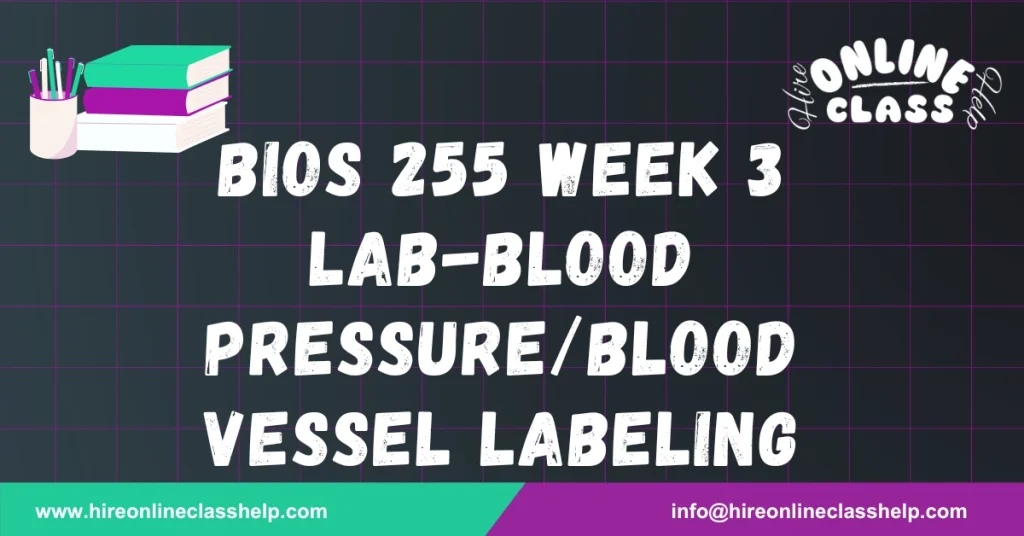






Name
Chamberlain University
BIOS-255: Anatomy & Physiology III with Lab
Prof. Name
Date
Blood circulates throughout the body via three types of blood vessels: arteries, capillaries, and veins. Both arteries and veins are made up of three distinct layers of tissue, while capillaries consist of a single layer. Several factors influence blood pressure and flow within these vessels. Additionally, there are various mechanisms through which shock can occur. In this study, we will follow the path of blood through pulmonary and systemic circulations, identifying the major arteries and veins along the way. Interactive 3D models will be used to explore blood vessels in more detail.
Complete the activities in the following sections of Anatomy.TV Cardiovascular System: Blood Vessels, Blood Flow and Pressure, Circulatory Pathways, Vessels of the Trunk, Vessels of the Head and Neck, and Vessels of the Limbs.
To access Anatomy.TV, navigate to:
Resources tab > Library > Library Resources-Database A-Z > Anatomy.TV > Cardiovascular System > Assigned Sections
Once you are in the Cardiovascular System section, scroll through and complete the activities. As you proceed, keep a lab report handy to record data.
Complete the lab report.
| Blood Vessel | Histological Description/Special Characteristics | Function |
|---|---|---|
| Large arteries | The aorta, connected to the heart’s left ventricle | Take blood away from the heart |
| Medium arteries | Muscular artery | Carries blood from elastic arteries to resistance vessels like small arteries |
| Arterioles | Small section of an artery that leads to a capillary | Transports blood into capillaries |
| Capillaries | Branch between the arterioles and venules | Exchange area between blood and tissue cells |
| Medium veins | 1 cm in diameter, shaped like a flapped cusp; may have valves or tunica interna infoldings into the lumen | Prevent backflow of blood |
| Large veins | Thick tunica externa, no valves present | Drain blood from tributaries into the heart |
When a fall in arterial pressure is detected, the cardiovascular center decreases parasympathetic stimulation to the SA node via the vagus nerve while increasing sympathetic stimulation through the cardiac accelerator nerves.
The signs and symptoms of shock include decreased blood pressure, sweating, increased heart rate, thirst, dehydration, confusion, reduced urination, and, in severe cases, acidosis lactic.
a. Portal system: A system of veins that carries blood between capillary networks.
b. Function of the hepatic portal system: The hepatic portal system transports blood from the digestive tract, spleen, and pancreas to the liver for filtration and nutrient processing.
| Activity | Deliverable | Points |
|---|---|---|
| Part 1 | Complete lab activities | 15 |
| Part 2 | Complete lab report | 15 |
| Total | Complete all lab activities | 30 |